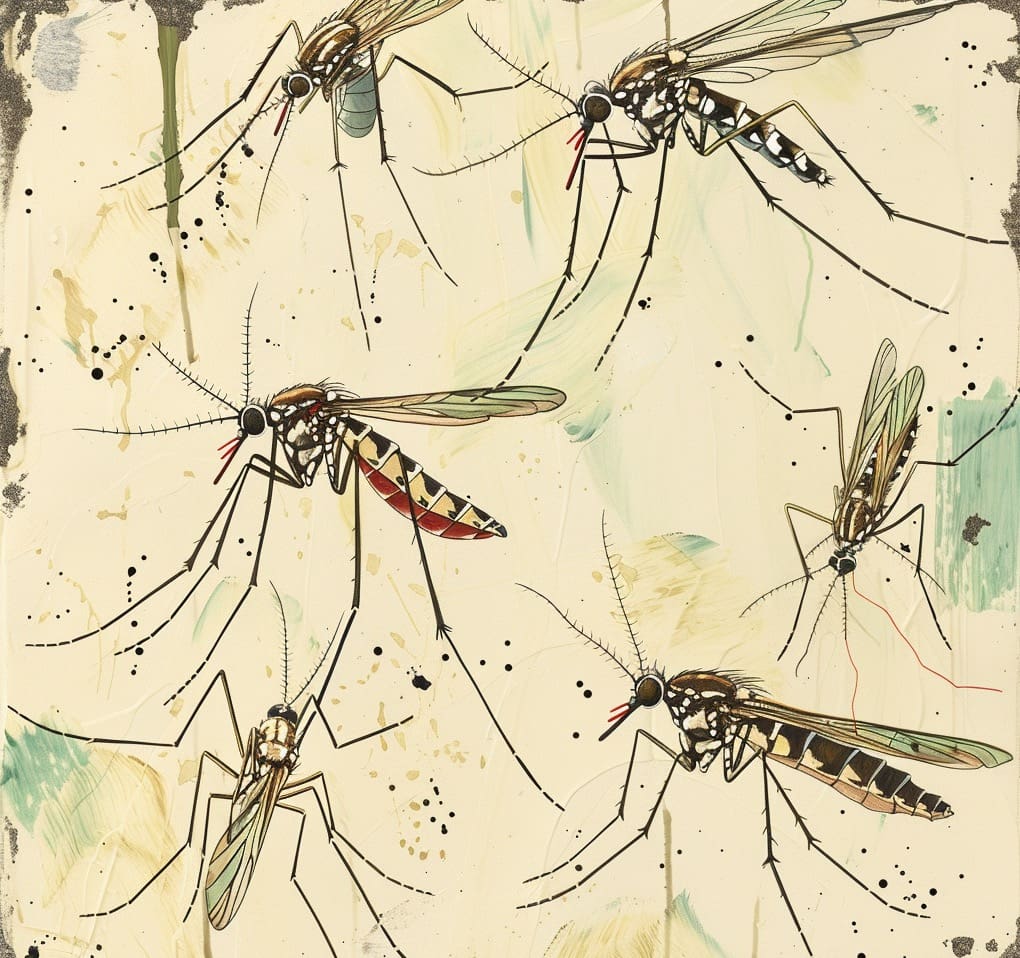
Global Warning, including the Southern United States
Dengue fever is a serious threat that's on the rise globally, and we're here to sound the alarm. This mosquito-borne illness can strike quickly, leaving victims with severe flu-like symptoms and potentially life-threatening complications.
The CDC has warned that there is potential for Dengue Fever in the Southern most states such as Florida, Louisiana and Southern Texas.
As climate change expands mosquito habitats, more regions are at risk. We'll explore the latest dengue fever warnings, helping you understand the signs, symptoms, and preventive measures to keep yourself and your loved ones safe. From identifying high-risk areas to recognizing early warning signs, we've got you covered.
Stay informed and prepared as we delve into this crucial health topic. Together, we'll arm ourselves with knowledge to combat the spread of dengue fever and protect our communities.
Understanding Dengue Fever
Dengue fever is a mosquito-borne viral infection that poses a significant global health threat. We'll explore the key aspects of this disease and its worldwide impact to provide a comprehensive understanding of the dengue fever warning.
Key Facts About Dengue
Dengue fever is caused by four distinct but closely related virus serotypes (DENV-1, DENV-2, DENV-3, and DENV-4). It's transmitted primarily by Aedes aegypti mosquitoes, which thrive in tropical and subtropical climates. Symptoms typically appear 3-14 days after an infected mosquito bite and include high fever, severe headache, muscle and joint pain, and skin rash. In severe cases, dengue can lead to hemorrhagic fever or shock syndrome, potentially causing organ damage and death.
Global Burden and Impact
Dengue's global burden has increased dramatically in recent decades, with an estimated 390 million infections occurring annually. The World Health Organization reports that dengue is endemic in over 100 countries, putting nearly half of the world's population at risk. Economic costs associated with dengue are substantial, including direct medical expenses and indirect costs such as lost productivity. Climate change and urbanization contribute to the expansion of mosquito habitats, increasing the risk of dengue transmission in previously unaffected areas.
Recognizing Dengue Fever Symptoms
Identifying dengue fever symptoms early is crucial for timely treatment and preventing complications. We'll explore the key signs to watch for and when to seek medical attention.
Early Warning Signs
Dengue fever symptoms typically appear 3-14 days after a mosquito bite. Common early signs include:
- High fever (104°F/40°C)
- Severe headache
- Pain behind the eyes
- Muscle and joint pain
- Nausea and vomiting
- Skin rash
- Fatigue
These symptoms often mimic other illnesses, making diagnosis challenging. It's important to monitor symptoms closely, especially if you've recently traveled to a dengue-endemic area.
When to Seek Medical Attention
Seek immediate medical care if you experience:
- Severe abdominal pain
- Persistent vomiting
- Bleeding gums or nose
- Blood in urine, stool, or vomit
- Rapid breathing
- Fatigue or restlessness
- Cold, clammy skin
These signs may indicate severe dengue, which can be life-threatening. Early medical intervention is critical for managing complications and ensuring a full recovery.
Transmission and Risk Factors
Dengue fever transmission occurs primarily through the bite of infected Aedes mosquitoes. Understanding the transmission process and identifying high-risk populations is crucial for effective prevention and control strategies.
How Dengue Spreads
Dengue virus spreads through a mosquito-human-mosquito cycle. Female Aedes mosquitoes, primarily Aedes aegypti, become infected when they bite a person carrying the virus. After 8-12 days, these mosquitoes can transmit the virus to other people they bite. Infected humans become viremic (capable of infecting mosquitoes) 4-5 days after being bitten and remain so for about 5 days.
Key points about dengue transmission:
- Mosquito breeding sites: Aedes mosquitoes lay eggs in standing water in containers like buckets, flower pots, and discarded tires
- Peak biting times: These mosquitoes are most active during early morning and before sunset
- No direct human-to-human transmission: Dengue doesn't spread directly between people
- Multiple serotypes: Four distinct dengue virus serotypes exist, and infection with one doesn't provide immunity against the others
High-Risk Populations
Certain groups face a higher risk of contracting dengue fever or developing severe complications:
- Residents of endemic areas: People living in tropical and subtropical regions where dengue is common
- Travelers to endemic regions: Individuals visiting areas with active dengue transmission
- Children and elderly: These age groups often experience more severe symptoms
- Pregnant women: Increased risk of complications for both mother and fetus
- People with weakened immune systems: Including those with chronic diseases or undergoing immunosuppressive treatments
- Individuals with previous dengue infections: Higher risk of severe dengue upon subsequent infection with a different serotype
- Rapid urbanization: Leads to increased mosquito breeding sites
- Poor sanitation: Contributes to mosquito proliferation
- Limited access to healthcare: Delays diagnosis and treatment
- Climate change: Expands mosquito habitats and extends transmission seasons
Diagnosis and Treatment
Accurate diagnosis and timely treatment are crucial for managing dengue fever effectively. We'll explore the diagnostic methods used to identify dengue and discuss available treatment options.
Diagnostic Methods
Diagnosing dengue fever involves a combination of clinical assessment and laboratory tests. Healthcare providers use these methods:
- Clinical evaluation: Assessing symptoms and physical signs
- Blood tests: Complete blood count to check for low platelet levels
- Serological tests: Detecting dengue-specific antibodies (IgM and IgG)
- NS1 antigen test: Identifying viral proteins in early stages of infection
- PCR (Polymerase Chain Reaction): Detecting viral RNA for precise diagnosis
- Tourniquet test: Evaluating capillary fragility in suspected cases
Early diagnosis is essential for proper management and preventing complications. Doctors consider travel history, symptoms, and potential exposure to mosquitoes when evaluating patients.
Treatment Options
Dengue fever has no specific antiviral treatment, but supportive care is crucial for recovery:
- Fluid replacement: Oral rehydration or intravenous fluids to prevent dehydration
- Pain management: Acetaminophen for fever and pain relief (avoiding aspirin and NSAIDs)
- Rest: Adequate rest to support the body's immune response
- Monitoring: Close observation of vital signs and platelet counts
- Blood transfusions: In severe cases with significant blood loss
- Oxygen therapy: For patients with respiratory distress
For severe dengue cases, hospitalization may be necessary to manage complications and provide intensive supportive care. Prompt medical attention and adherence to treatment guidelines significantly improve outcomes for dengue patients.
Prevention and Control Measures
Preventing dengue fever requires a comprehensive approach targeting both mosquito populations and individual protection. We've outlined key strategies to control the spread of dengue and reduce the risk of infection.
Mosquito Control Strategies
Effective mosquito control is crucial in preventing dengue transmission. Here are essential strategies:
- Eliminate standing water: Remove or empty containers that collect water, such as flower pots, buckets, and old tires
- Use larvicides: Treat water sources with appropriate larvicides to kill mosquito larvae
- Implement biological control: Introduce mosquito-eating fish in larger water bodies
- Conduct regular spraying: Use insecticides to reduce adult mosquito populations in high-risk areas
- Improve waste management: Properly dispose of garbage to reduce potential breeding sites
- Maintain clean gutters: Clear debris from roof gutters to prevent water accumulation
- Encourage community participation: Organize clean-up campaigns to remove mosquito breeding sites
- Use mosquito repellents: Apply EPA-registered repellents containing DEET, picaridin, or oil of lemon eucalyptus
- Wear protective clothing: Choose long-sleeved shirts and long pants, especially during peak mosquito activity hours
- Install screens: Fit windows and doors with mosquito screens to keep insects out
- Use bed nets: Sleep under insecticide-treated bed nets, especially in areas without air conditioning
- Avoid peak biting times: Limit outdoor activities during early morning and late afternoon when Aedes mosquitoes are most active
- Stay in air-conditioned areas: Mosquitoes are less active in cool environments
- Use mosquito coils or vaporizers: These can provide additional protection in outdoor areas
- Travel precautions: Research dengue risk at your destination and take appropriate preventive measures
Dengue Fever Outbreaks and Warnings
Dengue fever outbreaks continue to pose significant health risks globally. We'll explore current hotspots and essential travel advisories to help you stay informed and protected.
Current Global Hotspots
Dengue fever hotspots are concentrated in tropical and subtropical regions. Southeast Asia, including countries like Thailand, Vietnam, and Indonesia, reports high case numbers annually. Latin America, particularly Brazil, Mexico, and Colombia, experiences recurring outbreaks. The Caribbean islands, India, and parts of Africa also face significant dengue burdens. Urban areas with rapid population growth and poor sanitation are especially vulnerable to mosquito breeding and virus transmission. Areas of the Southern United States are becoming risk areas such as Florida, Louisiana and Texas.
Travel Advisories
Travelers to dengue-endemic regions should take precautions:
- Check CDC or WHO travel alerts before departure
- Use EPA-approved insect repellents containing DEET, picaridin, or oil of lemon eucalyptus
- Wear long-sleeved shirts and long pants, especially during dawn and dusk
- Stay in accommodations with air conditioning or screened windows
- Eliminate standing water sources around living areas
- Seek medical attention promptly if dengue symptoms develop during or after travel
Health authorities recommend travelers obtain travel insurance covering medical evacuation. Pregnant women and individuals with chronic medical conditions should consult healthcare providers before visiting high-risk areas.
Conclusion
We hope you enjoy these informational articles. If you'd like to learn more about our eco-friendly pest control services, call (844) 955-2447.
Read More
Your Path to a Pest-Free Home or Business
Romex Pest Control
We are committed to protecting you, your children, and your pets with our eco-friendly, child-friendly, and pet-friendly guaranteed pest control solutions.
Romex Pest Control is fully insured and licensed in Texas, Oklahoma, Louisiana, and Mississippi.
Service Areas:
Hours
M-F 8 am–5 pm
Sat 8 am–2 pm
Sun Closed
Established 2016 © Copyright 2025 Romex Pest Control










